A Watermarking Method for 3D Printing Based on Menger Curvature and K-Mean Clustering
Abstract
:1. Introduction
2. Related Works
2.1. 3D Model Watermarking
2.2. 3D Printing Watermarking
2.3. Menger Curvature-Based 3D Printing Watermarking
3. The Proposed Algorithm
3.1. Overview
3.2. Watermark Embedding
3.3. Watermark Extracting
4. Experimental Results and Analysis
4.1. Invisibility Evaluation
4.2. Robustness Evaluation and Analysis
4.3. Performance Evaluation
5. Conclusions
Acknowledgments
Author Contributions
Conflicts of Interest
References
- How 3D Printing Works: The Vision, Innovation and Technologies Behind Inkjet 3D Printing. 3D Systems: Rock Hill, CA, USA, 2012. Available online: http://www.officeproductnews.net/sites/default/files/3dWP_0.pdf (accessed on 14 March 2018).
- How Paper-Based 3D Printing Works: The Technology and Advantages. Mcor Technologies Ltd. 2013. Available online: http://rapid3dparts.co.za/how-paper-based-3d-printing-works.pdf (accessed on 14 March 2018).
- Ramya, A.; Vanapalli, S. 3D Printing Technology in Various Applications. Int. J. Mech. Eng. Technol. 2016, 7, 396–409. [Google Scholar]
- Rulania, T. Impact and Applications of 3D Printing Technology. SSRG Int. J. Comput. Sci. Eng. 2016, 3, 79–82. [Google Scholar]
- Helena, D. Applications of 3D printing in healthcare. Kardiochir. iTorakochirurgia Polska 2016, 13, 283–293. [Google Scholar] [CrossRef]
- Ira, S.; Parker, S. Copyright Issues in 3D Printing. In Proceedings of the International Technology Law Conference, Paris, France, 30–31 October 2014; pp. 1–14. [Google Scholar]
- Feng, X.; Liu, Y.; Fang, L. Digital Watermark of 3D CAD Product Model. Int. J. Secur. Its Appl. 2015, 9, 305–320. [Google Scholar] [CrossRef]
- Hu, Q.; Lang, Z. The Study of 3D Digital Watermarking Algorithm Which is based on a Set of Complete System of Legendre Orthogonal Function. Open Autom. Control Syst. J. 2014, 6, 1710–1716. [Google Scholar] [CrossRef]
- Liu, J.; Wang, Y.; He, W.; Li, Y. A New Watermarking Method of 3D Mesh Model. Indones. J. Electr. Eng. 2014, 12, 1610–1617. [Google Scholar] [CrossRef]
- Rolland, X.; Do, D.; Pierre, A. Triangle Surface Mesh Watermarking based on a Constrained Optimization Framework. IEEE Trans. Inf. Forensics Secur. 2014, 9, 1491–1501. [Google Scholar] [CrossRef]
- Ho, J.U.; Kim, D.G.; Choi, S.H.; Lee, H.K. 3D Print-Scan Resilient Watermarking Using a Histogram-Based Circular Shift Coding Structure. In Proceedings of the 3rd ACM Workshop on Information Hiding and Multimedia Security, Portland, OR, USA, 17–19 June 2015; pp. 115–121. [Google Scholar]
- Hou, J.U.; Kim, D.G.; Lee, H.K. Blind 3D Mesh Watermarking for 3D Printed Model by Analyzing Layering Artifact. IEEE Trans. Inf. Forensics Secur. 2017, 12, 2712–2725. [Google Scholar] [CrossRef]
- Yamazaki, S.; Satoshi, K.; Masaaki, M. Extracting Watermark from 3D Prints. In Proceedings of the 22nd International Conference on Pattern Recognition, Stockholm, Sweden, 24–28 August 2014; pp. 4576–4581. [Google Scholar]
- Suzuki, M.; Piyarat, S.; Kazutake, U.; Hiroshi, U.; Takashima, Y. Copyright Protection for 3D Printing by Embedding Information inside Real Fabricated Objects. In Proceedings of the 10th International Conference on Computer Vision Theory and Applications, Berlin, Germany, 11–14 March 2015; pp. 180–185. [Google Scholar]
- Giao, N.P.; Song, H.J.; Lee, S.H.; Kwon, K.R. 3D Printing Watermarking Method Based on Radius Curvature of 3D Triangle. J. Korea Multimedia Soc. 2017, 20, 1951–1959. [Google Scholar] [CrossRef]
- STL Format in 3D Printing. Available online: https://all3dp.com/what-is-stl-file-format-extension-3d-printing/ (accessed on 16 February 2018).
- The Virtual Reality Modeling Language. Available online: http://www.cacr.caltech.edu/~slombey/asci/vrml/ (accessed on 16 February 2018).
- Lecture Notes in Mathematics. Analytic Capacity, Rectifiability, Menger Curvature and the Cauchy Integral. Available online: https://www.springer.com/la/book/9783540000013 (accessed on 16 February 2018).
- Leymarie, F. Notes on Menger Curvature. 2007. Available online: https://web.archive.org/web/20070821103738/http://www.lems.brown.edu/vision/people/leymarie/Notes/CurvSurf/MengerCurv/index.html (accessed on 3 April 2018).
- Mac Queen. K-means Clustering Algorithm. In Some Methods for Classification and Analysis of Multivariate Observations; Chapter 1; University of California Press: Berkeley, CA, USA, 1967; pp. 281–297. [Google Scholar]
- XYZ Printing Printer Pro 3in1. Available online: http://eu.xyzprinting.com/eu_en/Product/da-Vinci-1.0-Professional3in1 (accessed on 16 February 2018).
- MakerBot Digitizer Desktop 3D Scanner. Available online: https://www.makerbot.com/media-center/2013/08/22/makerbot-digitizer-desktop-3d-scanner-order-today (accessed on 14 March 2018).
- Ohbuchi, R.; Takahashi, S.; Miyazawa, T.; Mukaiyama, A. Watermarking 3D Polygonal Meshes in the Mesh Spectral Domain. In Proceedings of the Graphics Interface, Ottawa, ON, Canada, 7–9 June 2001; pp. 9–18. [Google Scholar]
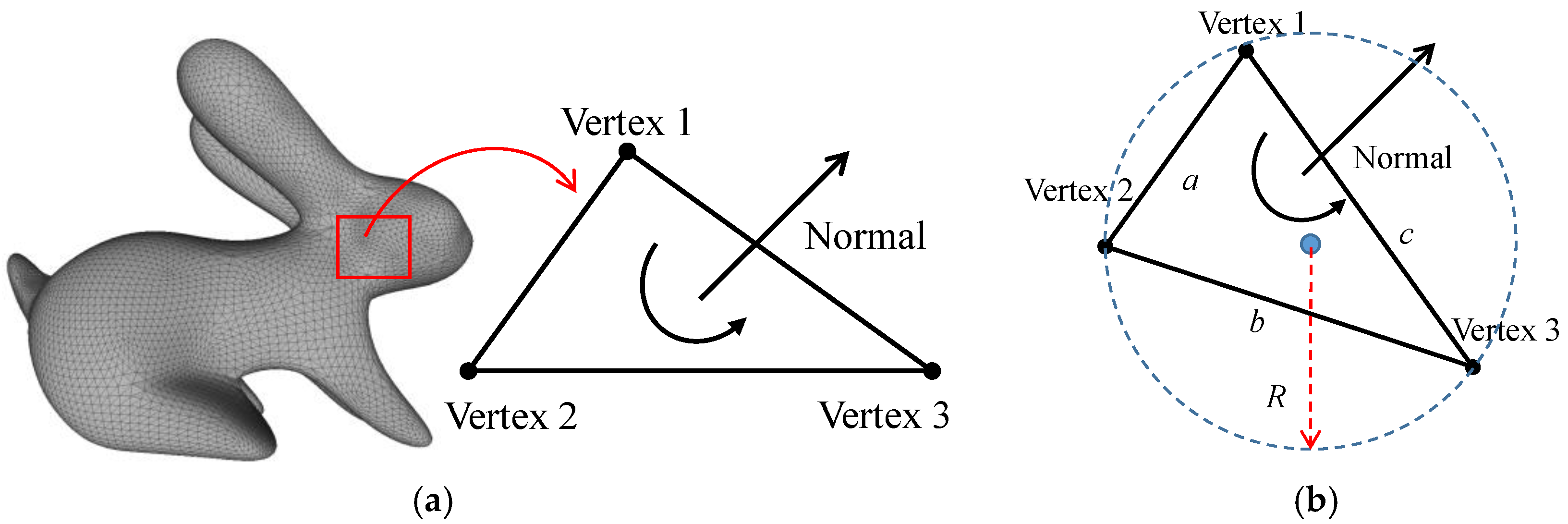
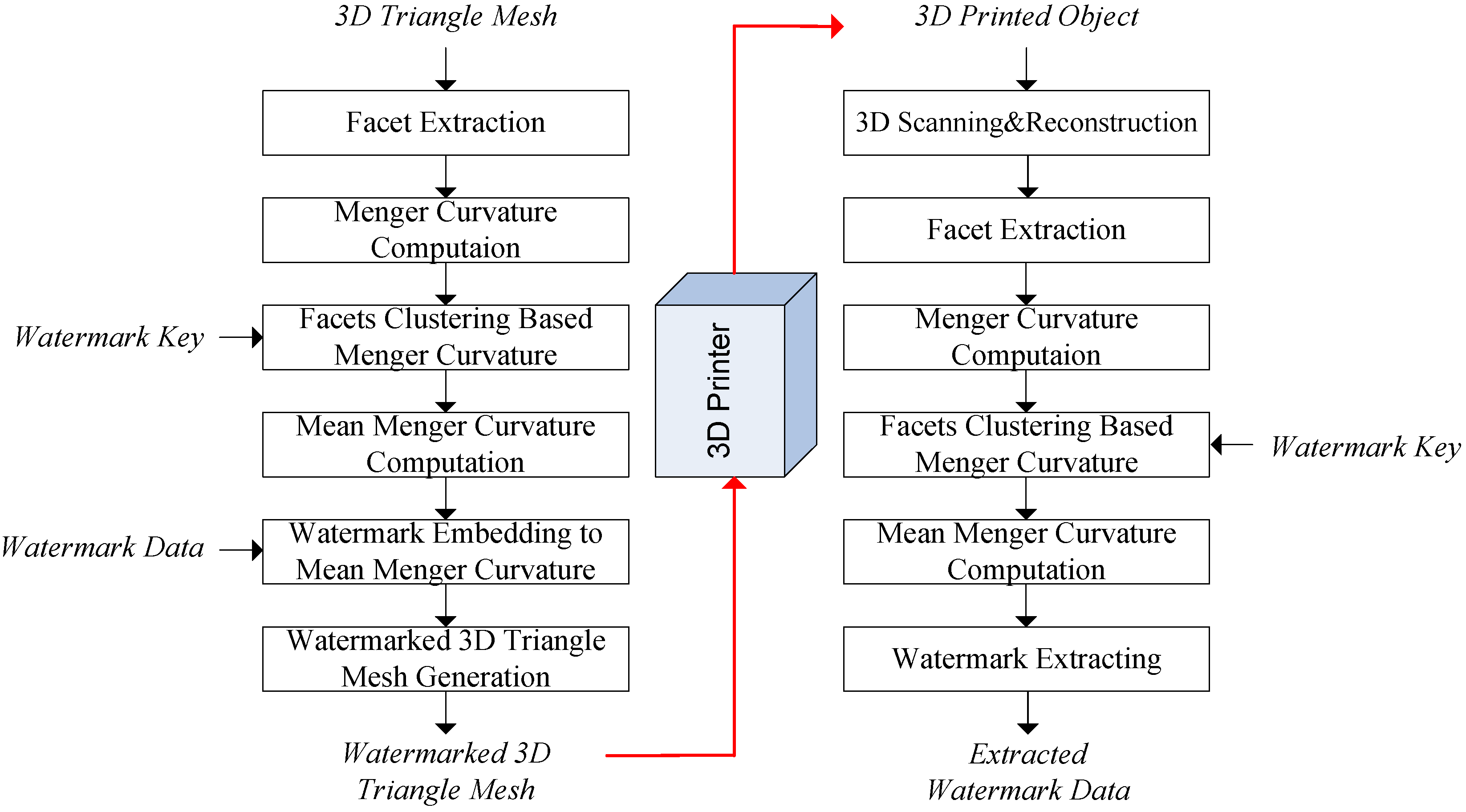
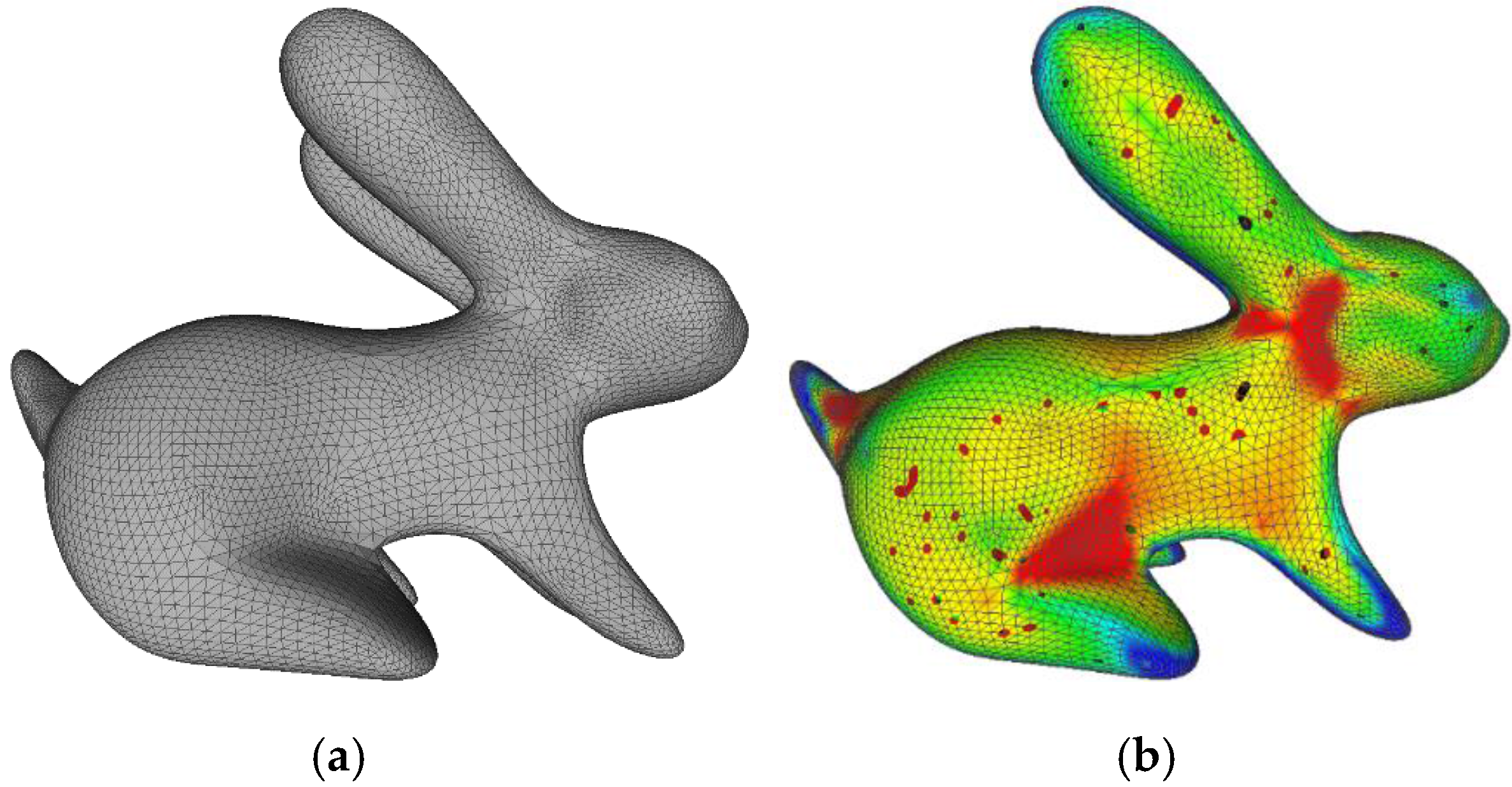
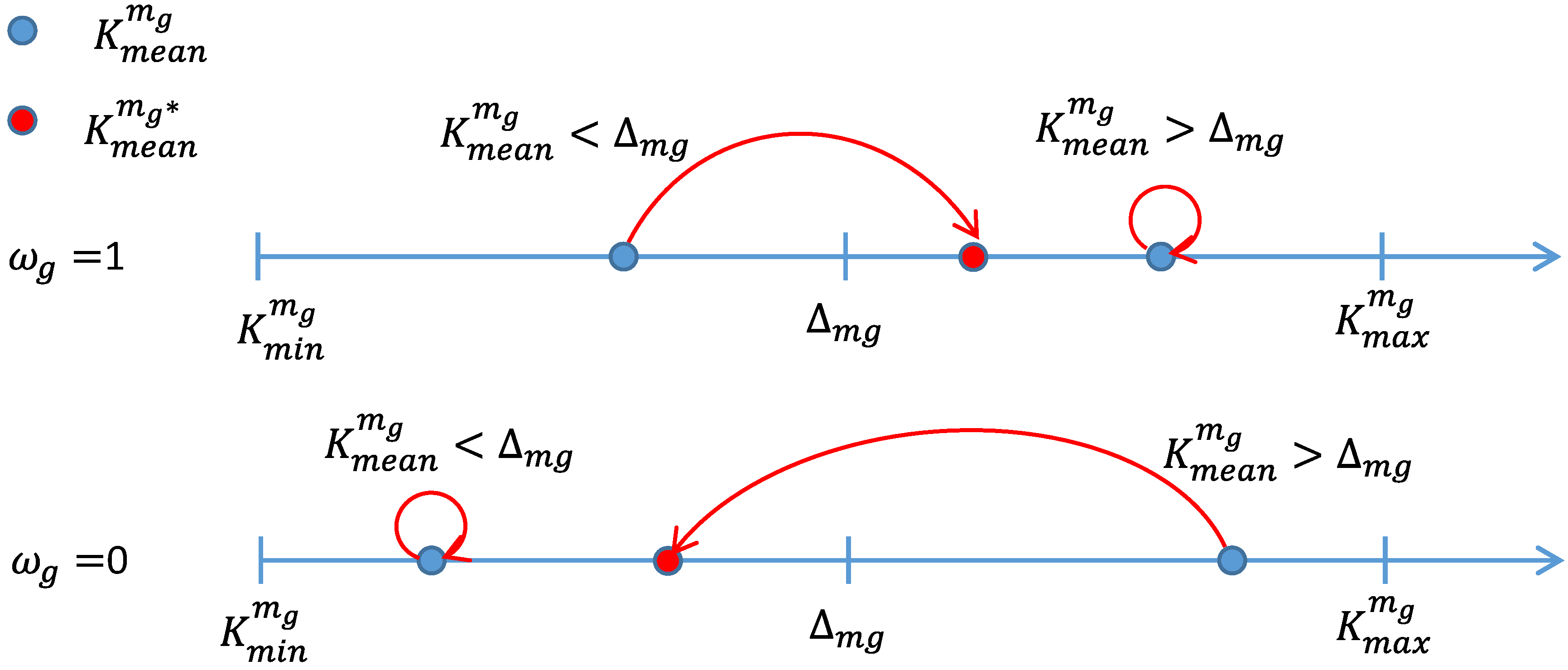
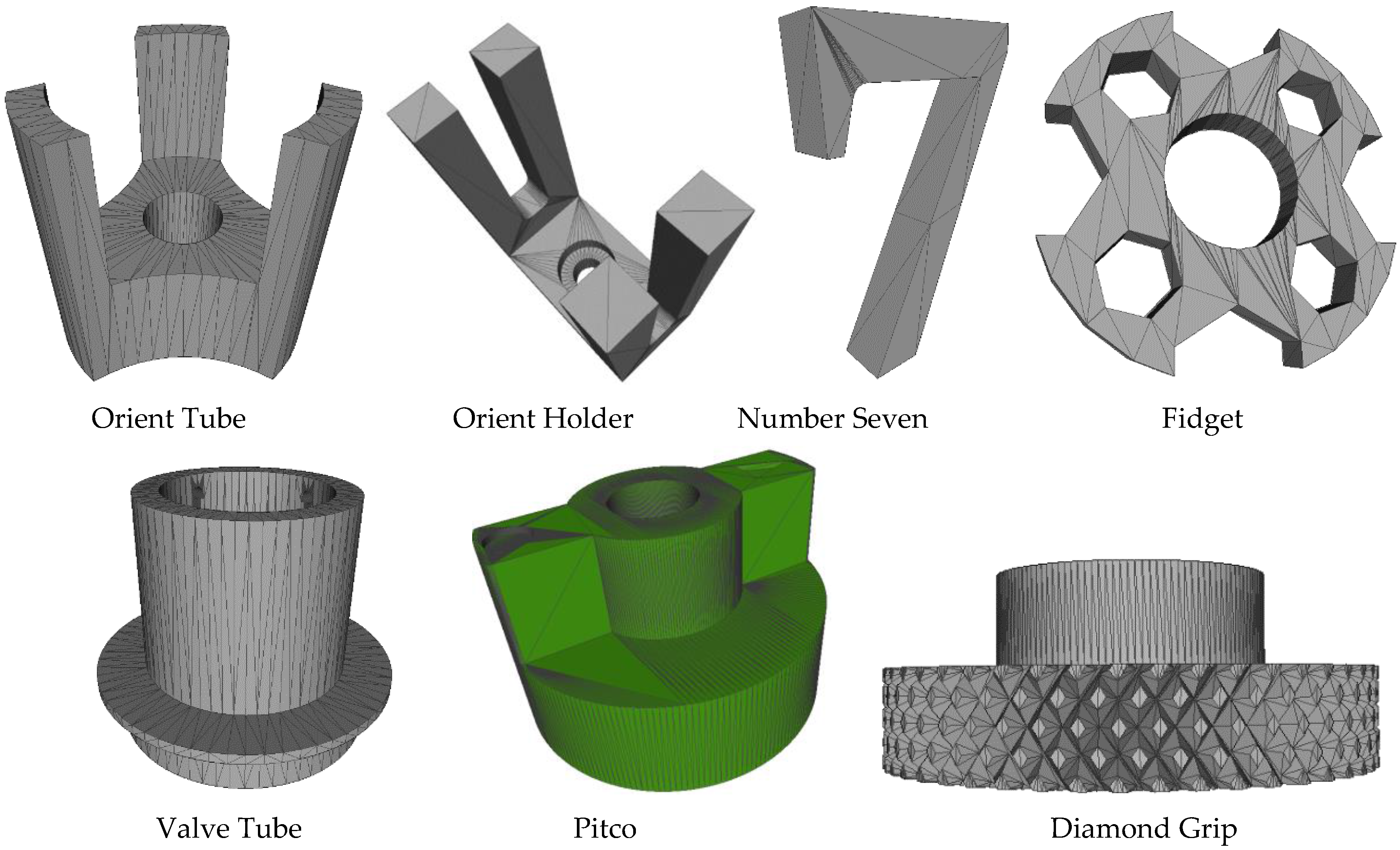
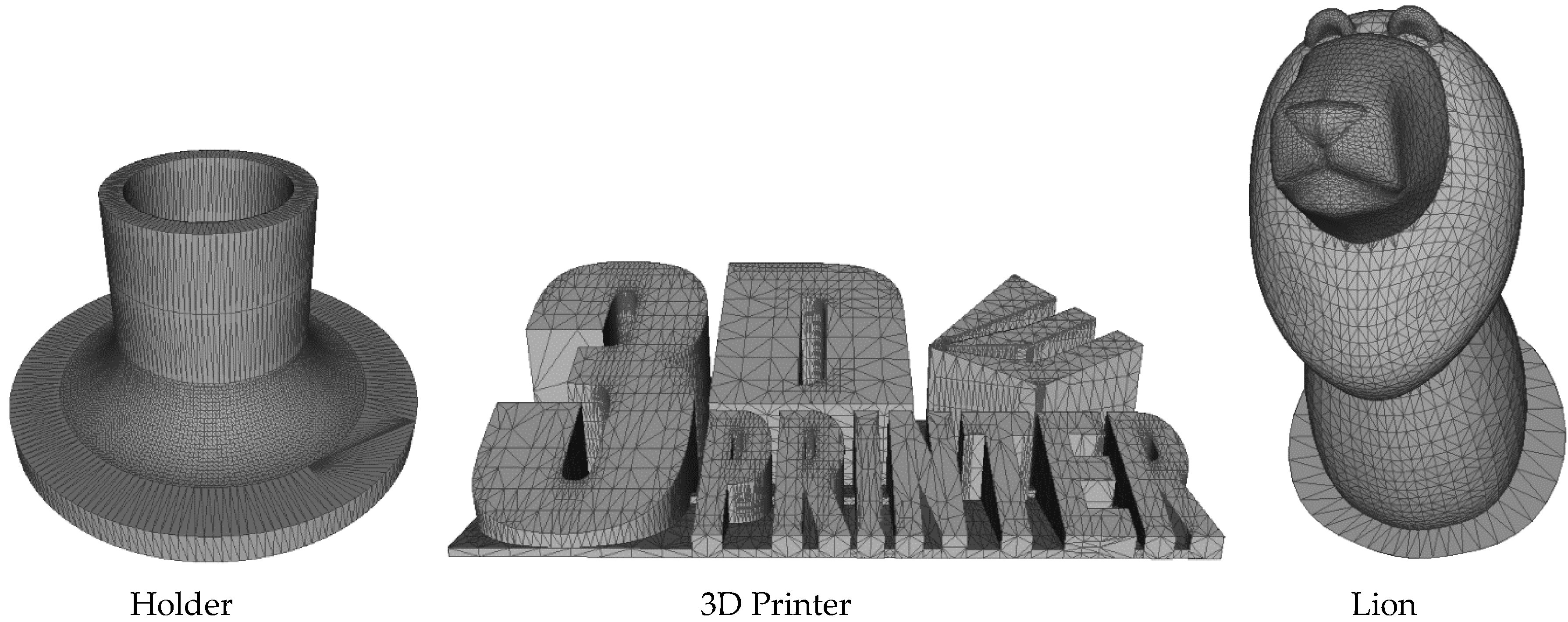
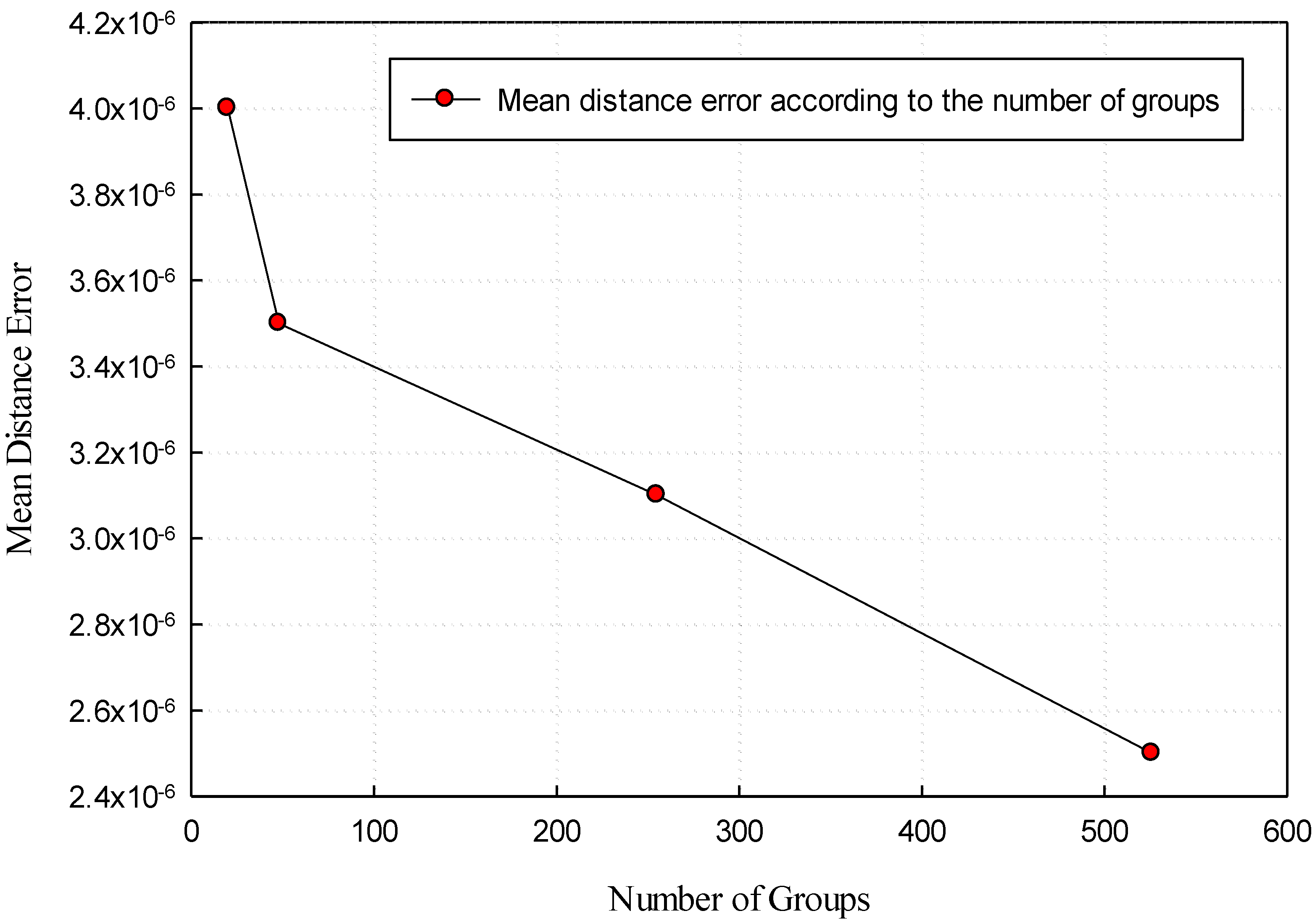

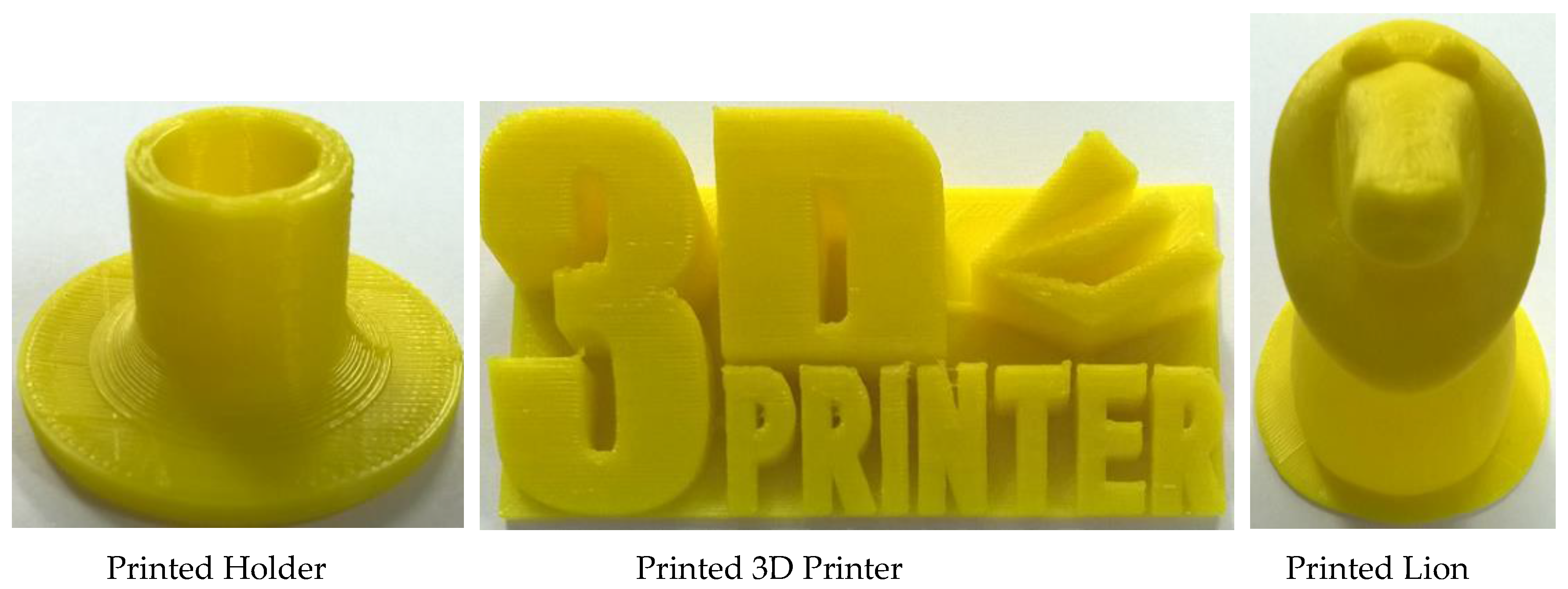
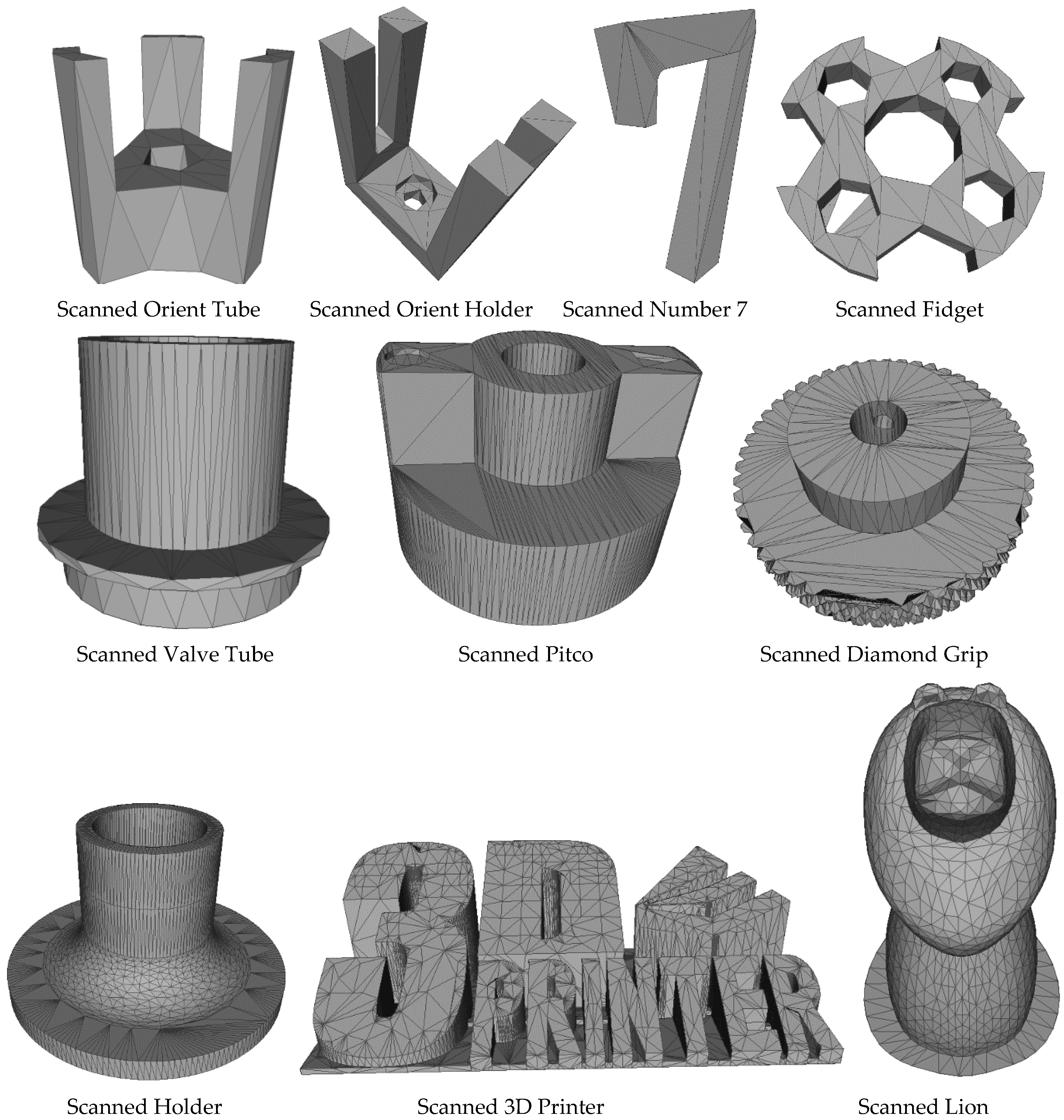
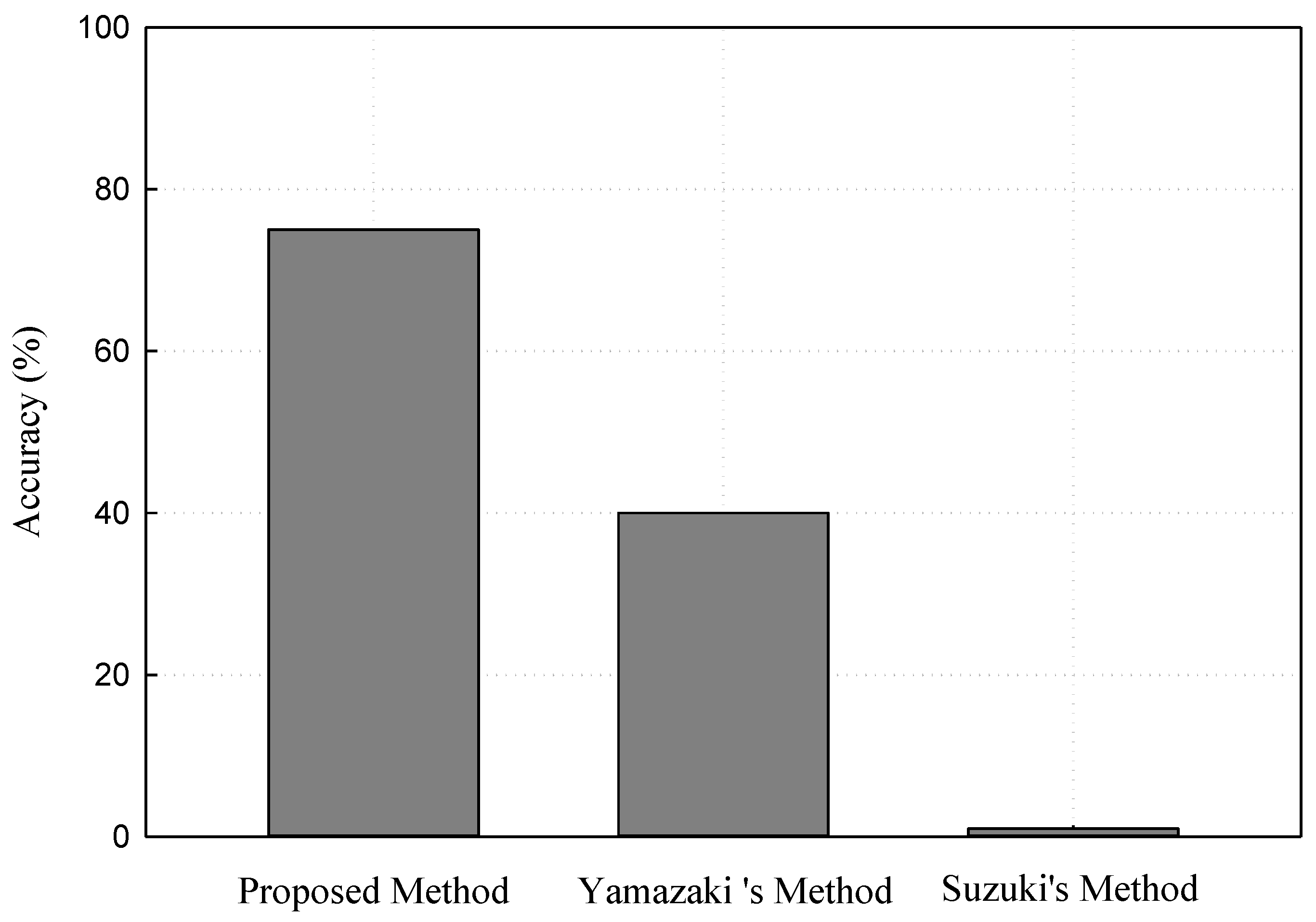
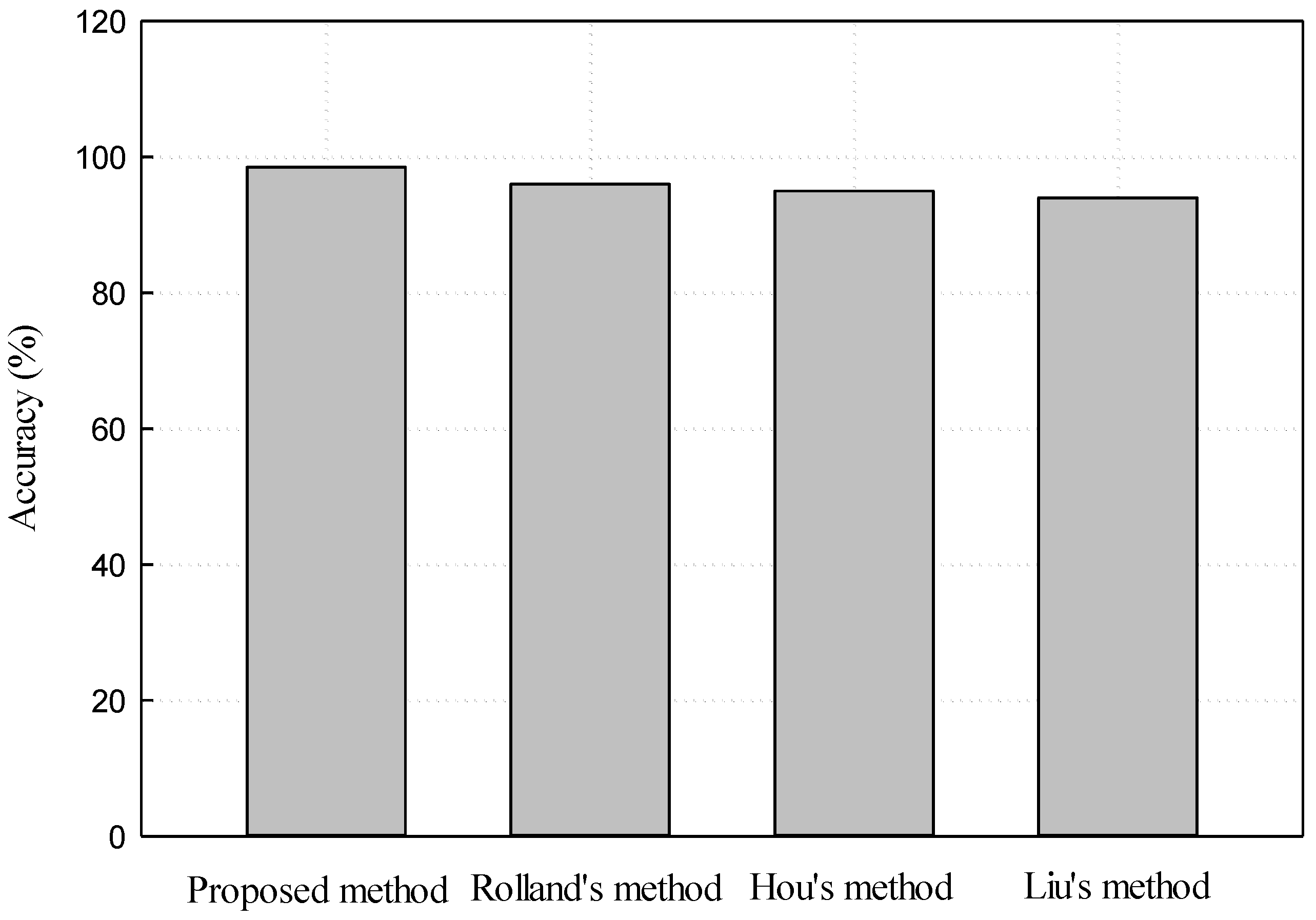
| Name Model | of Facets | of Groups | Mean Distance Error |
|---|---|---|---|
| Orient Tube | 464 | 19 | 4.0952 × 10−6 |
| Orient Holder | 520 | 21 | 4.0452 × 10−6 |
| Number 7 | 526 | 21 | 4.0042 × 10−6 |
| Fidget | 750 | 31 | 4.1330 × 10−6 |
| Valve Tube | 2062 | 64 | 3.1083 × 10−6 |
| Pitco | 7442 | 232 | 3.1329 × 10−6 |
| Diamond Grip | 8870 | 277 | 3.1274 × 10−6 |
| Holder | 12,392 | 309 | 2.4931 × 10−6 |
| Lion | 15,366 | 384 | 2.4991 × 10−6 |
| 3D Printer | 35,482 | 887 | 2.4993 × 10−6 |
| Name Model | of Facets | of Groups | Accuracy (%) |
|---|---|---|---|
| Scanned Orient Tube | 112 | 19 | 68.42 |
| Scanned Orient Holder | 126 | 21 | 52.38 |
| Scanned Number 7 | 130 | 21 | 74.42 |
| Scanned Fidget | 274 | 31 | 51.61 |
| Scanned Valve Tube | 830 | 64 | 50.00 |
| Scanned Pitco | 1859 | 232 | 54.31 |
| Scanned Diamond Grip | 2434 | 277 | 50.90 |
| Scanned Holder | 3196 | 309 | 51.78 |
| Scanned Lion | 4682 | 384 | 52.34 |
| Scanned 3D Printer | 14,733 | 887 | 50.62 |
| Method No. | Watermarking Domain | Number of Test Models | Length of Watermark Bit | Accuracy (%) |
|---|---|---|---|---|
| Yamazaki’ method | Frequency | 3 | 256 | 40 |
| Suzuki’s method | Spatial | 2 | 64 | ~0 |
| Proposed method | Spatial | 10 | Flexible | 74.42 |
© 2018 by the authors. Licensee MDPI, Basel, Switzerland. This article is an open access article distributed under the terms and conditions of the Creative Commons Attribution (CC BY) license (http://creativecommons.org/licenses/by/4.0/).
Share and Cite
Pham, G.N.; Lee, S.-H.; Kwon, O.-H.; Kwon, K.-R. A Watermarking Method for 3D Printing Based on Menger Curvature and K-Mean Clustering. Symmetry 2018, 10, 97. https://doi.org/10.3390/sym10040097
Pham GN, Lee S-H, Kwon O-H, Kwon K-R. A Watermarking Method for 3D Printing Based on Menger Curvature and K-Mean Clustering. Symmetry. 2018; 10(4):97. https://doi.org/10.3390/sym10040097
Chicago/Turabian StylePham, Giao N., Suk-Hwan Lee, Oh-Heum Kwon, and Ki-Ryong Kwon. 2018. "A Watermarking Method for 3D Printing Based on Menger Curvature and K-Mean Clustering" Symmetry 10, no. 4: 97. https://doi.org/10.3390/sym10040097





